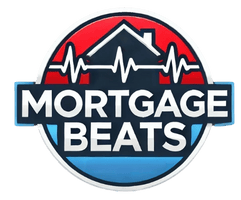Understanding Second Mortgages and Home Equity Loans
Second mortgages and home equity loans both allow homeowners to tap into their property’s equity, but they function differently. A second mortgage is a separate loan with its own terms and payment schedule, while a home equity loan typically operates as a lump-sum installment loan with fixed payments. Both options create liens subordinate to your primary mortgage, but their structures cater to different financial needs.
The fundamental similarity lies in their secured nature—both use your home as collateral, which generally results in lower interest rates than unsecured borrowing. However, this also means failure to repay could risk foreclosure. These products became particularly relevant in 2024 as homeowners sought to leverage equity gains from recent property value increases without refinancing their low-rate primary mortgages.
At NorCal Real Estate & Financial Service, we help clients understand these distinctions from the outset. Our advisors explain how each option fits into broader financial plans, ensuring homeowners make informed decisions about accessing their equity.
Key Structural Differences Between the Two
Second mortgages maintain completely separate terms from your first mortgage—different lenders, payment schedules, and potentially different rates. They’re often used for large, one-time expenses and usually have fixed interest rates. Home equity loans, while technically a type of second mortgage, typically come from your primary lender and may offer more flexible draw options.
The application processes differ significantly. Second mortgages usually require full underwriting similar to a primary mortgage, including credit checks, income verification, and appraisals. Home equity loans often have streamlined approval, especially if staying with your current lender. Some lenders now offer hybrid products that combine features of both, responding to evolving borrower needs in the current market.
NorCal Real Estate & Financial Service stays current on these product variations. We analyze clients’ existing mortgages and financial situations to determine which structure provides the most advantageous terms and flexibility.
Interest Rate Comparison: Fixed vs. Variable
Traditional second mortgages typically offer fixed interest rates, providing payment stability over the loan term—usually 10-30 years. Home equity loans often come with variable rates tied to prime rate indexes, though fixed-rate options have become more common recently as borrowers seek protection against rising rate environments.
As of 2024, the spread between these products has narrowed, with many lenders offering competitive fixed rates on both. However, second mortgages might still carry slightly higher rates due to their subordinate lien position. Variable-rate home equity loans often start with lower introductory rates but carry the risk of payment increases if indexes rise—an important consideration in uncertain economic climates.
NorCal Real Estate & Financial Service helps clients model various rate scenarios. We compare projected costs of fixed versus variable options based on current economic forecasts and the borrower’s expected repayment timeline.
Repayment Terms and Schedules
Second mortgages usually follow amortizing repayment schedules similar to primary mortgages, with consistent payments covering both principal and interest over 10-30 years. Home equity loans often have shorter terms—typically 5-15 years—and may offer interest-only payment options initially, followed by balloon payments or amortizing periods.
Some newer home equity products feature flexible repayment options, allowing borrowers to adjust payment sizes based on cash flow. Second mortgages tend to be less flexible once terms are set, though some lenders now offer recasting options similar to primary mortgages. Understanding these repayment structures is crucial when matching loan choices to financial plans.
NorCal Real Estate & Financial Service evaluates clients’ cash flow and financial projections to recommend terms that align with expected income changes, major expenses, and other debt obligations.
Tax Implications and Deductibility
The Tax Cuts and Jobs Act changed equity borrowing deductibility rules—now interest is only deductible if funds are used to “buy, build, or substantially improve” the home securing the loan. This applies equally to second mortgages and home equity loans, eliminating one traditional advantage of home equity products.
Careful documentation of fund use has become essential for claiming deductions. Many homeowners now establish separate accounts for tracking home improvement expenses when using equity funds. There’s no longer a distinction between “home equity debt” and “acquisition debt” for tax purposes—only the purpose of spending matters.
NorCal Real Estate & Financial Service coordinates with tax professionals to help clients structure equity borrowing in the most tax-advantageous ways. We ensure proper documentation systems are in place from the outset to support any planned deductions.
Closing Costs and Fees Breakdown
Second mortgages typically incur higher closing costs—often 2-5% of the loan amount—including appraisal fees, origination charges, and title insurance. Home equity loans usually have lower fees, sometimes just a few hundred dollars in processing charges, as they often skip full appraisals and title work.
Some lenders now offer “no-closing-cost” options for both products by slightly increasing interest rates. However, these can prove more expensive long-term for borrowers who keep the loans for many years. We’ve also seen growth in relationship discounts—reduced fees for existing banking customers or those who agree to automatic payments.
NorCal Real Estate & Financial Service helps clients evaluate when paying upfront fees makes sense versus opting for higher rates. Our break-even analyses consider both immediate cash flow and long-term interest costs.
Risk Assessment for Each Option
Both options carry foreclosure risk since your home secures the debt, but the risks manifest differently. Second mortgages’ fixed payments provide predictability but less flexibility if financial difficulties arise. Home equity loans’ variable rates could become unaffordable if rates spike, though fixed-rate versions mitigate this.
Recent financial innovations have introduced some risk-mitigation features. Some second mortgages now include temporary payment reduction options, while certain home equity products offer rate caps or fixed-rate conversion privileges. These protections vary significantly by lender and product.
NorCal Real Estate & Financial Service stress-tests each option against clients’ financial situations. We examine worst-case scenarios to ensure borrowers could handle payment increases or income disruptions without jeopardizing their homes.
Best Uses for Second Mortgages
Second mortgages excel for major, one-time expenses where predictable payments are valuable. Common uses include home renovations (especially those increasing property value), debt consolidation of high-interest loans, or funding large education expenses. They’re also strategic for investment property purchases when borrowers want to preserve primary residence equity.
In 2024, we’re seeing more homeowners use second mortgages to buy vacation properties or fund business ventures while keeping their low-rate primary mortgages intact. The fixed rates make these loans particularly attractive when interest rates are expected to rise.
NorCal Real Estate & Financial Service helps clients evaluate whether a second mortgage’s structure aligns with their spending needs and financial discipline. We match loan terms to specific expense timelines and repayment capacities.
Ideal Scenarios for Home Equity Loans
Home equity loans work best for borrowers who need flexibility or anticipate variable funding needs. They’re ideal for staged home improvement projects where costs emerge over time, or for expenses like medical bills that may require multiple draws. Those with strong credit but irregular income (like commission earners) often benefit from the payment flexibility.
Recent product innovations have made home equity loans attractive for gap financing during new home construction or between property sales. Some homeowners now use them to cover temporary cash shortages while waiting for stock vesting or bonus payments rather than selling investments.
NorCal Real Estate & Financial Service analyzes clients’ specific funding needs to determine if a home equity loan’s characteristics provide the right combination of accessibility and cost-efficiency for their situation.
How NorCal Real Estate & Financial Service Guides Your Decision
Our approach begins with a comprehensive review of your existing mortgage, home equity position, and financial goals. We analyze how each borrowing option would affect your overall debt structure, monthly cash flow, and long-term net worth. This holistic perspective often reveals opportunities or risks not apparent when viewing the products in isolation.
We maintain relationships with multiple lenders offering competitive second mortgage and home equity products. This allows us to present a range of options tailored to your credit profile, property type, and intended use of funds. Our proprietary comparison tools model various scenarios to identify the optimal solution.
With NorCal Real Estate & Financial Service, you gain more than a loan—you gain a strategic financial plan. We ensure your equity borrowing supports your broader objectives, whether that’s wealth building, debt management, or lifestyle enhancement.
Conclusion
Choosing between a second mortgage and home equity loan involves weighing payment stability against flexibility, upfront costs against long-term expenses, and fixed versus variable rate risks. In 2024’s economic environment—with home values high but interest rates fluctuating—this decision requires careful analysis of both current circumstances and future expectations.
NorCal Real Estate & Financial Service brings clarity to this complex choice. Our expertise helps homeowners access their equity in ways that align with their financial situations and goals, turning home value into a strategic asset rather than just dormant potential.
Ready to explore your home equity options? Contact NorCal Real Estate & Financial Service today for a personalized consultation. Let us help you determine whether a second mortgage, home equity loan, or alternative solution best serves your needs—because smart equity management begins with the right information.
Ready To Get The Best Financial Advise, Email us at: Chris@mortgagebeats.com



